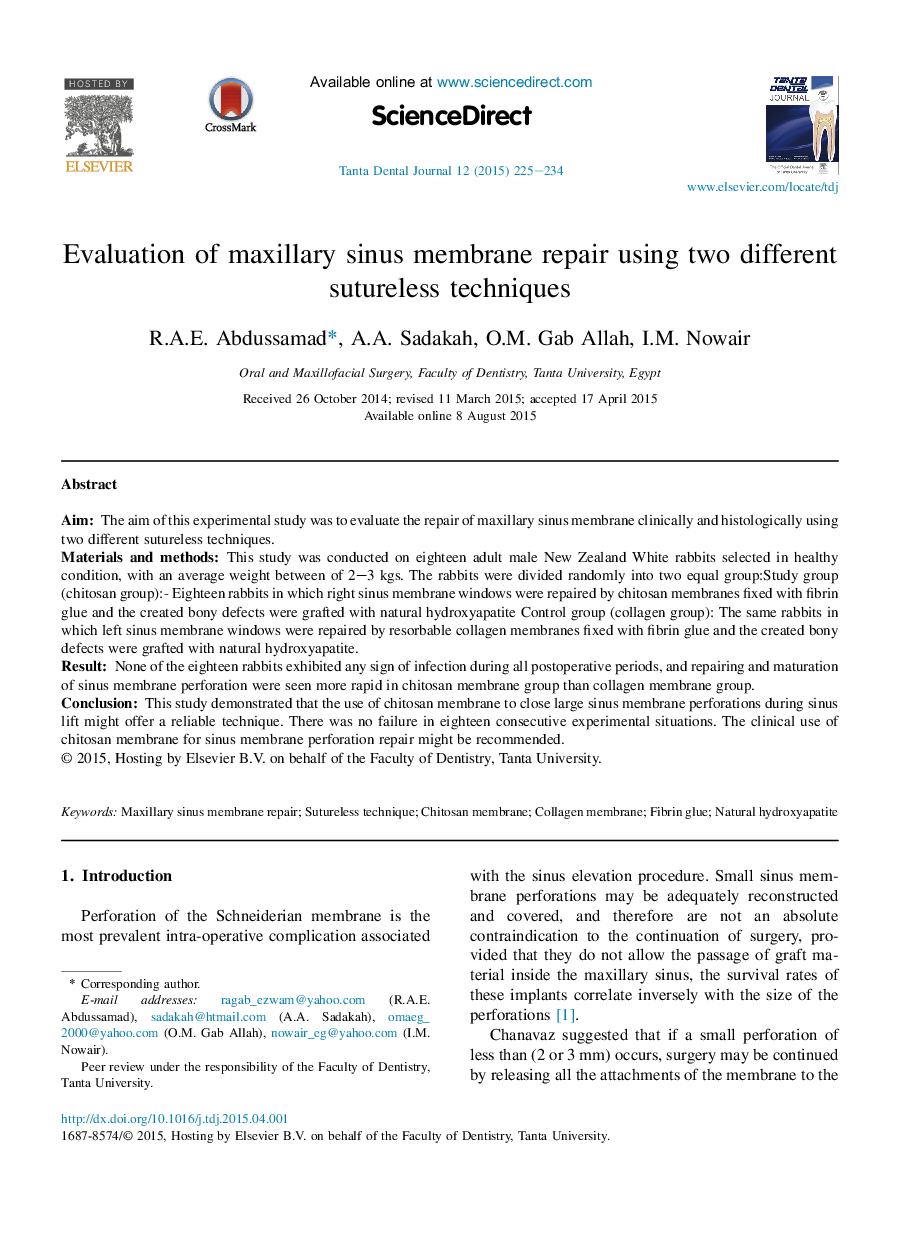| Article ID | Journal | Published Year | Pages | File Type |
|---|---|---|---|---|
| 3179597 | Tanta Dental Journal | 2015 | 10 Pages |
AimThe aim of this experimental study was to evaluate the repair of maxillary sinus membrane clinically and histologically using two different sutureless techniques.Materials and methodsThis study was conducted on eighteen adult male New Zealand White rabbits selected in healthy condition, with an average weight between of 2–3 kgs. The rabbits were divided randomly into two equal group:Study group (chitosan group):- Eighteen rabbits in which right sinus membrane windows were repaired by chitosan membranes fixed with fibrin glue and the created bony defects were grafted with natural hydroxyapatite Control group (collagen group): The same rabbits in which left sinus membrane windows were repaired by resorbable collagen membranes fixed with fibrin glue and the created bony defects were grafted with natural hydroxyapatite.ResultNone of the eighteen rabbits exhibited any sign of infection during all postoperative periods, and repairing and maturation of sinus membrane perforation were seen more rapid in chitosan membrane group than collagen membrane group.ConclusionThis study demonstrated that the use of chitosan membrane to close large sinus membrane perforations during sinus lift might offer a reliable technique. There was no failure in eighteen consecutive experimental situations. The clinical use of chitosan membrane for sinus membrane perforation repair might be recommended.
